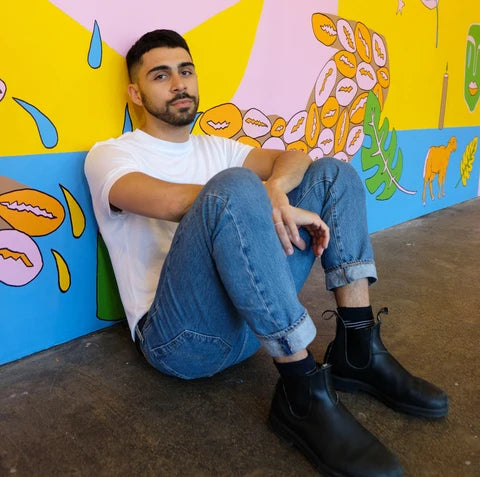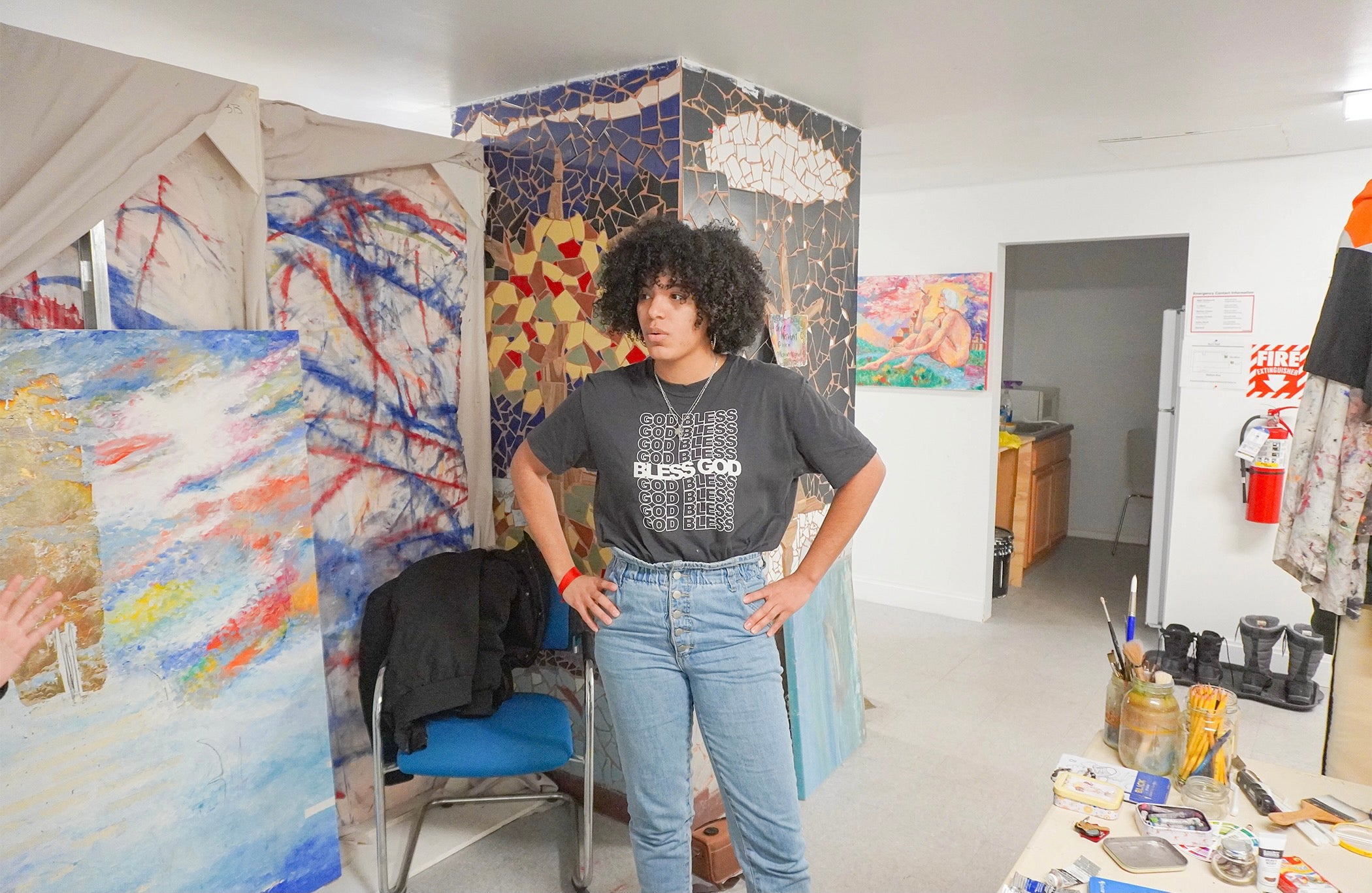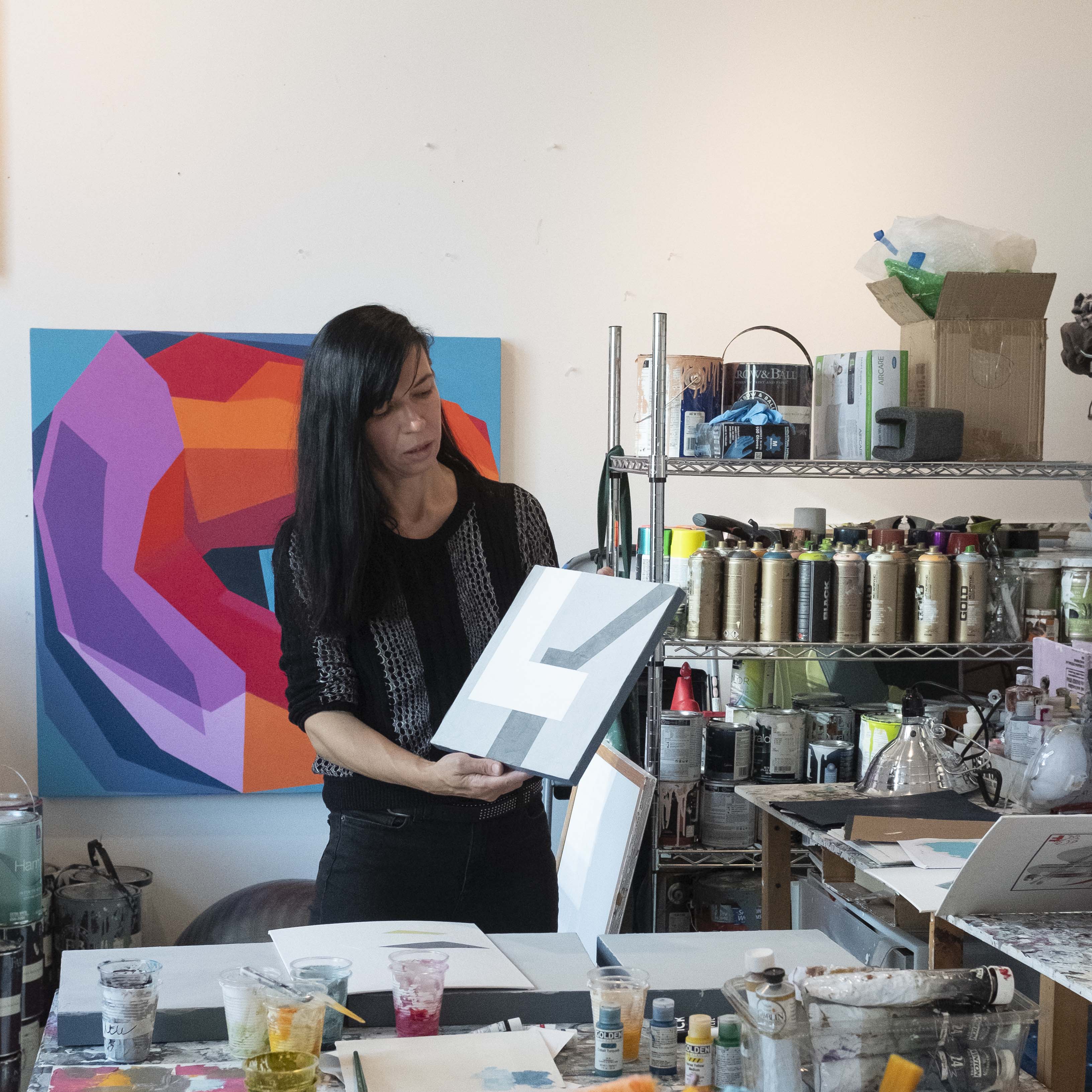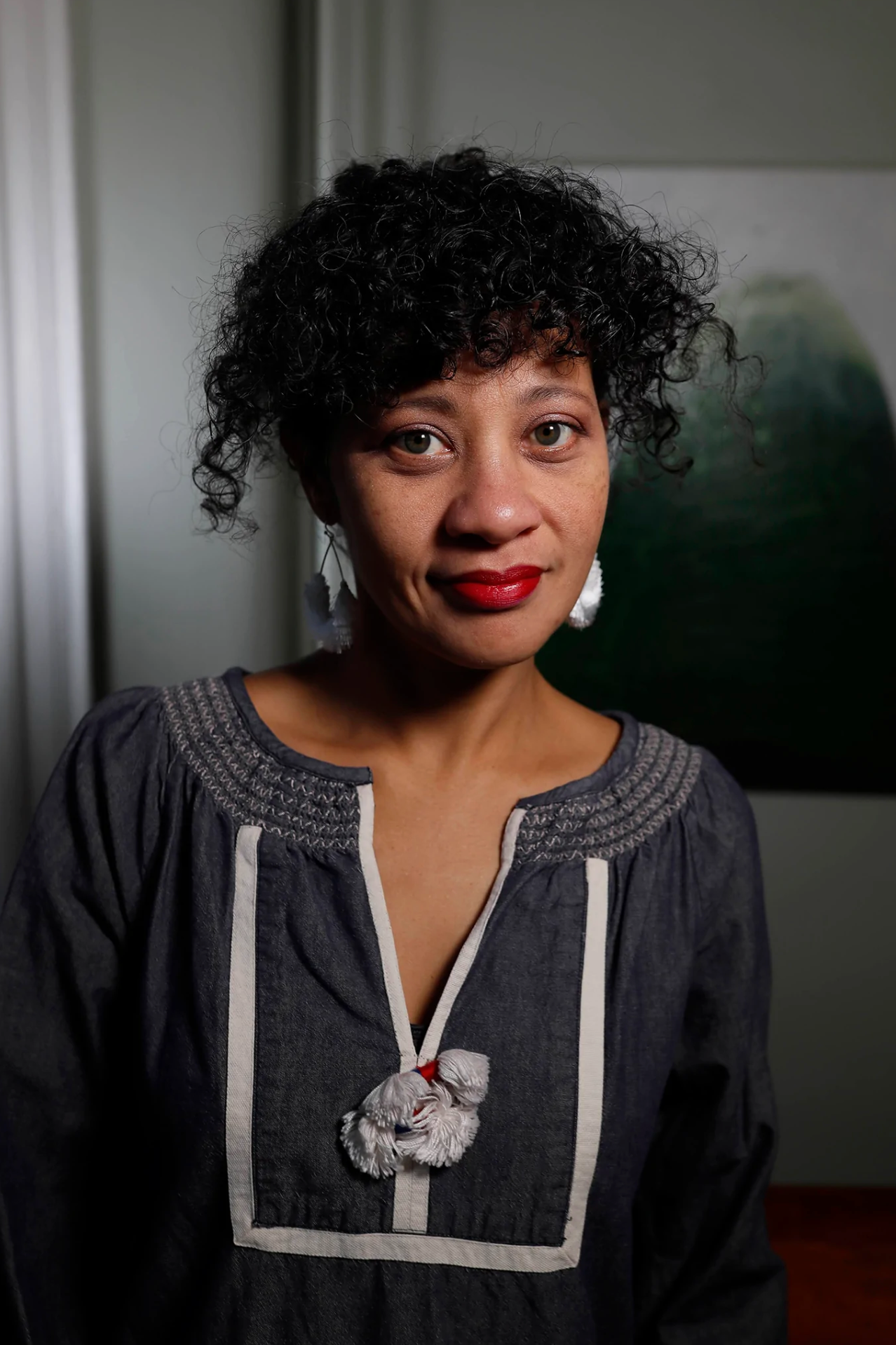No Products in the Cart

View Basia Goszczynska's full guest curation
Basia Goszczynska is a Brooklyn based artist who explores environmental and waste issues through a variety of mediums including sculpture, installation, performance, social practice and new media. She has presented her work in numerous exhibitions including at Pintô International, Arcadia Earth, Room 68, Chashama’s Space To Present, the Mid-Manhattan Public Library and OCAD University. Her most recent commissions include large-scale sculptures for the launch of partnerships between Mohawk Group and the Ocean Cleanup as well as Corona USA and Oceanic Global.
Many commodity objects have obsolescence planned into them, feeding into the loop of overproduction and waste. How does your use of discarded objects challenge that?
Planned obsolescence practices date back to the Great Depression. They first emerged, in part, to stimulate the economy, but they continue to be upheld for a variety of reasons. Despite being easy to criticize because they increase waste production, it’s important to acknowledge that these practices also drive some innovation and wealth creation. Further complicating matters, it’s not just the companies (and their alleged corporate greed) that are responsible for furthering these practices. In certain instances, well-intentioned government policies are also to blame, such as when owners of old, diesel cars are fined and newer electric cars are subsidized for the sake of lower carbon emissions. In addition, as free consumers, the majority of us are also, at times, guilty of prematurely replacing our products because newer models are faster, sexier, lighter, or what have you.
Because of this issue’s complexity, legislating an end to the practice, while protecting our democratic freedoms, is an ambitious endeavor, to say the least. As an artist, I’m grateful to be able to explore these issues through my work without jumping to conclusions or proposing solutions. My work with discarded objects reflects on the persistence of planned obsolescence while exploiting its many byproducts. If I challenge anything with my work, it’s our concept of what constitutes trash. I hope my resourcefulness and upcycling invites more people to appreciate our waste as a potentially valuable resource and to better “close the loop” on our waste in order to sustain our survival on this planet.

And where do you find discarded objects? Especially when it comes to really specific objects like oyster farming bags and gas tanks!
I often go out with a specific mission to collect a certain type of object, such as marine debris or salvaged plastic bags. Occasionally though, as was the case with the empty gas tanks that I found discarded on the side of the road, objects sometimes just catch my eye as I’m going about my business.
When I want marine debris, I head to Jamaica Bay Wildlife Refuge in Brooklyn and Queens where, unfortunately, there is never a shortage of washed up random plastic and foam objects. When I need salvaged plastic bags, I call up my friend Bob at Indigo Plastics, a recycling company out in Long Island. With the oyster farming bags, I first found a small fragment of one washed up on the beach. From that piece, I made Scrap and fell in love with the material. I wanted more! I asked around and finally a friend identified it for me. I then made some phone calls to local oyster farmers and eventually connected with Cape May Salt Oyster Farms. They had hundreds of damaged bags just sitting in their yard and were happy to have me take them off their hands and divert them away from the landfill. I was thrilled to pick them up for free. Well, when I say free, I only mean that I didn’t have to pay for the bags themselves. Working with salvaged oyster farming bags, as is the case with many of the salvaged objects I use, ended up being a lot more expensive than if I were to just buy new bags. I spent a lot of time tracking the bags down, gas driving to get them, as well as energy and water to pressure wash them. That experience helped me become even more sensitive to just how difficult it is to address waste management and environmental issues in a way that is both equitable and sustainable.

Looking at your earlier work like Spoils, Hauls, and the performance Separation Anxiety (my favorite!), is there a reason why you are most interested in marine debris and protecting ocean life?
I collect materials that are enjoyable to gather, that I can source in large quantities, and that are colorful and durable. It’s true that over the past few years I’ve worked with marine debris quite a lot. In large part, this is due to the fact that I love going to the beach :). But I’ve also worked a lot with cemetery dumpster flowers, salvaged plastic bags, and discarded children's toys.
On the beach, especially, collecting objects feels like a treasure hunt which appeals to my inner child (who still just wants to play and explore). I’m always in awe of the sheer variety of objects—or rather, fragments of objects—that I find washing up on our shores. Aesthetically, I’m also drawn to the patina of marine debris that develops as a result of how much time these objects spend in the ocean and sun. In addition to simply considering marine debris as an intrinsically valuable material, I also recognize that it poses a threat to other animals in the wild. Studies have shown that animals sometimes mistake our plastics for food or become entangled in them. Because of that, I enjoy the added benefit of not feeling guilty for extracting these washed up objects from the environment, the way I might if I were sourcing a material that another species relies on as a resource. Ultimately, I’m interested in protecting all life—mine included—and I appreciate that for us to thrive as a species, we must conserve land and resources for other species, as well.

I am a big proponent of the saying “art is always political”. Was there a specific body of work or project that you found impressive in terms of mobilizing your audience to action? And why do you think it was effective?
Some of my projects, particularly Legacy Oasis, Separation Anxiety, Action Tracks, and Rainbow Cave, have been very successful in generating the in-depth conversations that I consider to be crucial precursors for effective activism. I often find that discussions about our most pressing environmental issues are reduced down to ideological slogans or rhetoric that is designed to stoke fear and divide people along party lines. For any real progress to take place, we need to understand the full complexity of the environmental issues we face. To do that, it helps to talk to people with whom we disagree.
I noticed there’s historical and philosophical references in your work, i.e mended vessels and rainbow cave. Do you have any art world specific/ art history inspirations for the sculptural forms?
I’ve been fortunate to see a lot of art in my life and I’m sure that exposure has influenced my work, both consciously and unconsciously. The most direct references that come to mind for me are Walter De Maria’s Earth Room and Disney’s Little Mermaid, which inspired my installation Separation Anxiety.
You address fragility in the material and careful composition of your sculptures - and literally in the title “fertile fragility”. Why is this concept important to your characterization of sustainability?
Sustaining our species’ survival on this planet requires striking a delicate balance between human flourishing and environmental conservation. By inviting people to consider our relationship with our environment as a fragile balancing act, I hope to encourage a level of caution and sensitivity in the debates that my work provokes.

Fertile Fragility, installation and wall-mounted sculptures, marine debris, wire, gauze, plaster, 2020
How did you go about bringing together artists for your curatorial project, Regarding the Wild?
I curated Regarding the Wild shortly after leaving the Vermont Studio Center where I spent a month in residency. I was really inspired by the work of my fellow residents and wanted to help promote it back in New York. I also included work by a handful of other artist friends whose work fit within the theme.

Regarding the Wild, installation view, 2019
Here are some most well-known sustainability habits. Overrated or underrated?
*This is meant to be sort of a fun question, answers don’t have to be factually accurate*- Using LED lights: Well, LEDs last longer, so there’s less hassle in changing them out. Ah geez, that sounds so privileged! Do you know that today, there are still 940 million people who don’t even have access to electricity? I bet those folks would love to change a lightbulb. Any lightbulb. But yes, if you can afford the higher upfront costs of LEDs, go for it! I’m really looking forward to the day when everyone will have access to sustainable light sources.
- Composting: Composting our food scraps is probably one of the best things we can do to minimize methane gas in our landfills. In New York though, it seems like only high income neighborhoods have municipal compost pick up programs (and even those programs got cut when Covid hit). I’m very lucky to live next to a community garden where I can easily drop off my compost, but I consider myself very privileged for that. People who live in small dwellings with multiple roommates might struggle with keeping up with the compost pile (especially if the neighborhood pickup happens only once a week) or finding space for a worm bin. But yeah, composting is magic.
- Thrifting clothes: I used to love thrifting and still occasionally browse thrift and vintage shops for fun. In the past, I really enjoyed the hunt especially since I couldn’t really afford to buy new high quality clothes and I liked to think that it was a lot better for the environment to buy second hand. I realized though that I often purchased items that I didn’t really love or that didn’t fit exactly right. Because thrifting takes so much time, and because things are typically less expensive, I tended to buy more, overall. These days, the studio keeps me a lot more busy and I have more money, so I more often opt to buy my clothes new, albeit very sparingly. When I do shop, I look for basic classic cuts and colors that pair well together and will not go out of style so that I can own fewer clothes. Because I spend more on each item now, I’m a lot more diligent about keeping it in the best shape possible, so I do more spot cleaning, hand washing and mending.
- Bamboo toilet paper: I’ve never bought it myself because it’s more expensive, but I’ve heard it’s softer and more sustainable, so I’m looking forward to trying it.
- Veganism: Awesome but very challenging to stick to, especially when traveling and/or trying to avoid processed foods.

And lastly - I bet you saw this question coming - has the pandemic changed your work process or conceptual interests?
The pandemic has reinforced my fascination with plastic and how it functions in the world. The virus underscored just how fragile and vulnerable humans are and how much more resilient we are when we’re equipped with our most advanced technologies. I wasn’t surprised that plastic usage soared throughout the pandemic as people reached for it in order to erect social distancing barriers and to contain germs. Yet again, plastics’ unique properties and low cost beat out all our other materials as a crucial, life-saving resource. In many ways, plastic is now almost akin to water when it comes to extending and persevering our lives. But just as when we face the destruction and damage of a flood, we must now cope with the surge of plastic that we’ve generated.






